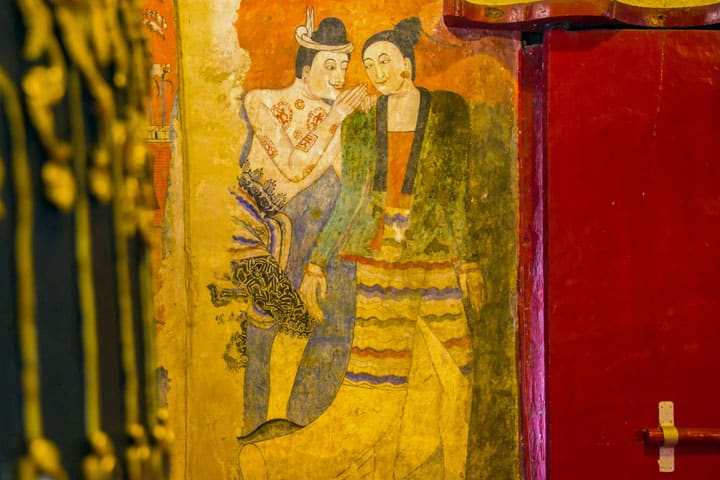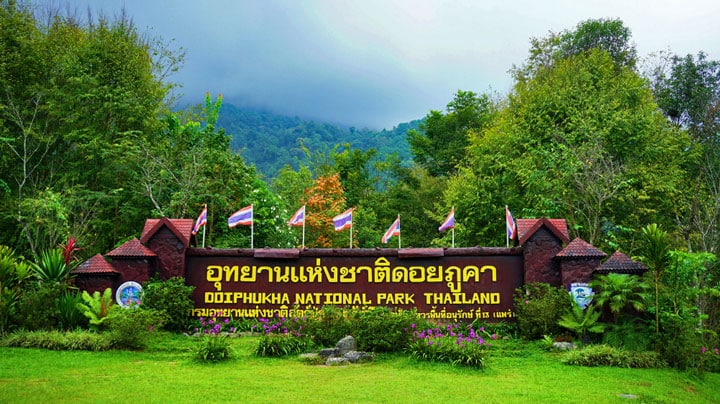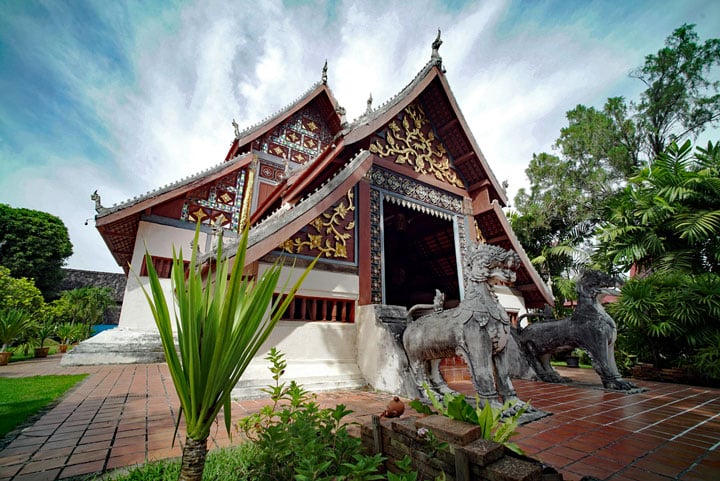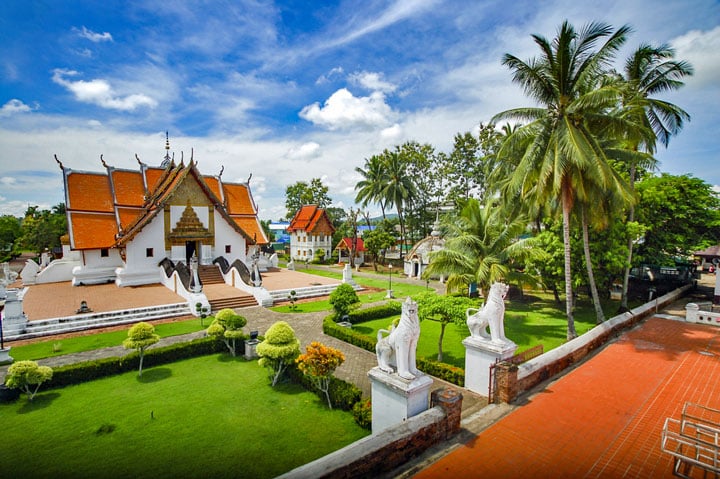Sweet nothings in Nan

Traditional Thai mural on temple wall at Wat Phumin in Nan (Southtownboy Studio / Shutterstock.com)
The Province Nan in the far north of Thailand, slightly tucked away against the border of Laos, there is one of rural beauty with rustic Thai charms.
If you are in Thailand to shop in large shopping malls such as in Bangkok or want to enjoy an exuberant nightlife such as in Pattaya, do not go to Nan. It is also not by the sea, so you cannot practice diving or other water sports in Nan.
In Nan you go in search of peace, for signs of the old elusive culture in this area that was blown into the country from the north centuries earlier. It is a hidden gem where tourists find a haven to experience the natural beauty and cultural history in peace.
History
Nan, now a province with less than half a million inhabitants, lies in a green valley on the border of Laos. Due to its relative proximity to Luang Prabang, the historic capital of the Laotian Lan Xang kingdom, the first settlers in the area were from Lan Xang. These early settlers settled around 700 years ago around the current district of Pua which is rich in rock salt deposits. The earliest Nan rulers united with neighboring principalities in the kingdom of Lan Na. The center of power in the area was concentrated further south in the fertile basin of the river Nan.
Nan's history, development and architecture were heavily influenced by several neighboring kingdoms, especially Sukhothai, which played an important political and religious role in shaping Nan's development. Over the centuries, however, Nan has been alternately controlled by Lan Na, Sukhothai, Burma, and Siam, in that order.
In 1558, the city of Nan was conquered and depopulated by the Burmese. Towards the end of the 18th century, Nan forged an alliance with the new Bangkok-based Rattakosin kingdom and then existed as a semi-autonomous kingdom with its own monarchy from 1786 to 1931.

(Amnat Phuthamrong / Shutterstock.com)
Nan province
Today, Nan is still home to numerous hill tribes such as the Thai Lue, Hmong, N'tin and Khamu. Much of Nan is devoted to agriculture, especially rice and fruit growing. Nan has six national parks, including the beautiful Doi Phukha National Park, with mountains reaching up to 2.000 m. Nan's rich natural beauty makes it an ideal destination for trekking, especially if one wants to avoid the hustle and bustle of neighboring Chiang Rai and Chiang Mai .
The province's unique ethnic and earthy appeal is perhaps best seen in the Tai Lue village of Ban Nong Bua, 30 kilometers north of Nan city, where tall and ethereal Lanna-style banner-like flags wave gently at Wat Nong Bua . The temple, highlighted by a beautiful wooden portico in the muted pastel colors of blue, brown and gold, bears witness to the Tai Lue culture. Outside in the leafy courtyard, four men play traditional music that fades into silence as visitors wander through a maze of wooden houses behind the temple. Elderly villagers sit in the shade under their stilt houses and greet passing visitors
A scene even more pastoral as the temple itself awaits those who walk down a nearby path behind Ban Nong Bua School to the languid Nan River. With a small temple at your side, it is a beautiful place to enjoy the beautiful silence and tranquility. The attraction of nature and the freshness of the fields is simply idyllic. Sit here for a while, let it sink in and whisper some sweet nothings in your companion's ear.

Wat nong bua
The capital Nan
The provincial capital of Nan has a relaxed charm, an interesting history, some impressive temples and a nice museum. There are also a number of good restaurants and bars along the river where you can plan your sightseeing visits in a relaxed way.
Take the cruciform temple Wat Phumin, for example, where somewhat fading murals reflect an ancient culture. The playfulness of the women in the murals, dressed in colorful pha-sin sarongs, is reflected in the clothing of today's schoolgirls. But the most admired of the murals is that of a young couple, whispering sweet nothings in each other's ear. This also gave birth to the tourism slogan “Experience the whisper of love in Nan”
Besides love, there is also plenty of life in the air of Nan – especially in the mornings and evenings at this time when the cool season gradually gives way to the warmer period. There's no better way to appreciate Nan's slower northern rhythms than to walk from Wat Phumin on Phakong Road as the sun sets and the modern world fades even further into memory.

Wat phumin
When dusk falls, the night market starts, where “sai-oua” sausages, “khao-soi” curry noodles and more northern delicacies are sold. In a park next to the market, local artists often perform in traditional clothing, singing melancholy in the local dialect about the slow rhythm of everyday life. The typical Lanna dance “forn ngaen” is then performed.
Further in Nan are the Wat Chiang Kham with a gilded pagoda, which stays open until late in the evening and the Nan National Museum, where all ethnic groups of the province are described, supplemented with black and white photos of life in the Nan villages, as it once was.
Even during the high season, Nan is characterized by a blissful emptiness, a place to philosophize with your companion about the finer things in life. Not shouting, of course, but whispering and preferably with sweet words.
Source: The Nation


The question is how long the peace and blissful rest will last. The Ministry of Tourism has listed the province as one of the "hotspots" on its political agenda. And the first Chinese are already there
reported on the horizon!
Thailand's most beautiful province in terms of natural beauty. Always part of my program when I travel through the North
I've been to Nan province (pronounced -naaan- with a falling tone) a few times. Very beautiful and peaceful indeed.
I also visited the Thai Lue temple Nong Bua ('Lotus swamp'). After all, my son is half a Thai Lue. In a few weeks I will be going to Thailand for the first time in 4 years with a week long visit to Nan. I almost can not wait.